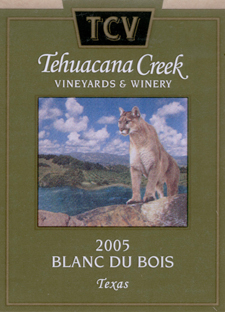 |
|
Wine Details
Price:
Description:
Blanc du Bois is a white grape specifically developed for the hot climate in Southern United States. It is the result of 40 years of cross-breeding at the University of Florida with several vinifera in its lineage, including Muscato. This is very apparent in its fruity and aromatic flavors which makes it a unique white wine reminiscent of a dry Riesling. Our 2005 Blanc du Bois has grassy and citrusy aromas and rich flavors of tropical fruits and bananas. It is a delicate white wine that goes well with mild seafood dishes or pasta. Since it has been aged in 100% stainless steel it has crisp and lively fruit. The finish is herbal and spicy with hints of lime.
|
|
|